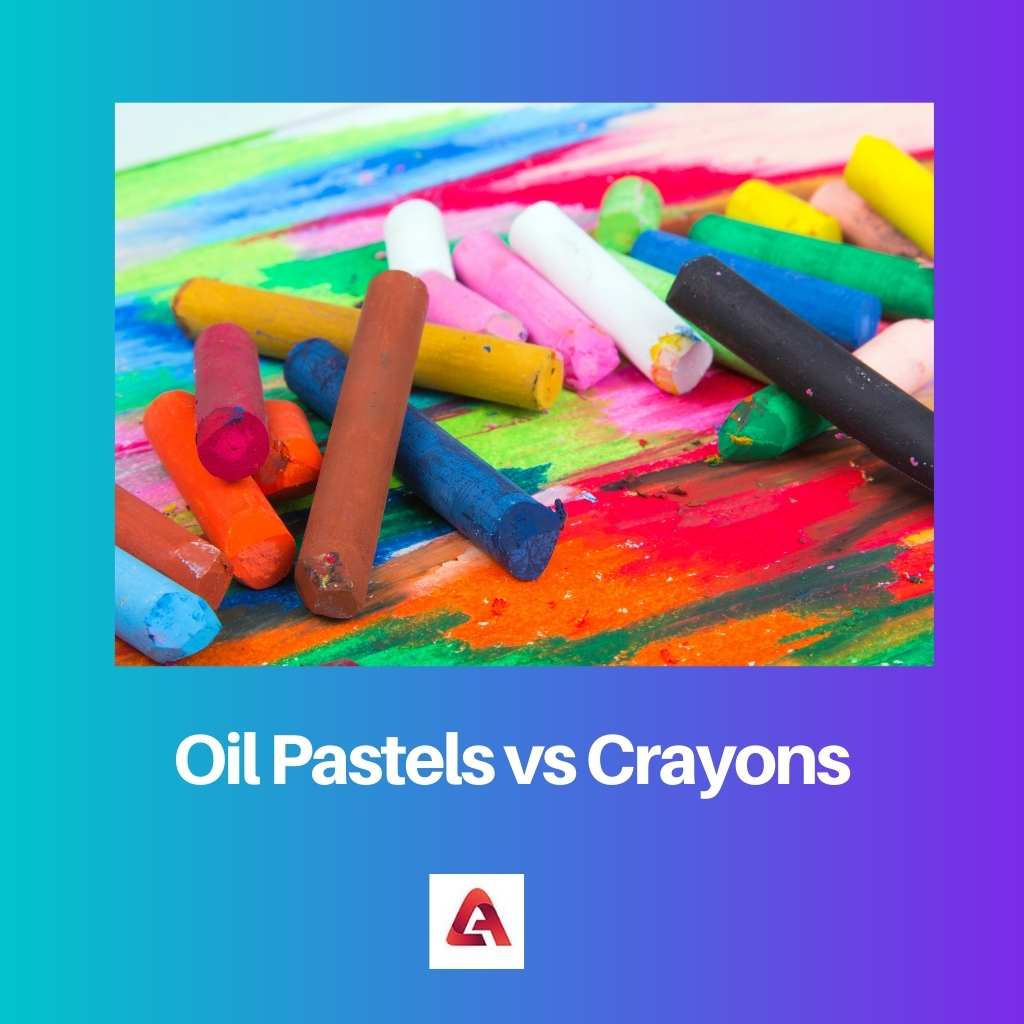Everyone loves color and drawings. Drawing and painting are some of the core subjects in schools, and almost every person has made drawings and paintings at least once in a lifetime.
Drawings and paintings can be made up of several different types of colors such as color pencils, watercolors, acrylic colors, and more. Oil pastels and crayons are two more types of colors that are quite popular.
Key Takeaways
- Oil pastels are made with oil and pigment, while crayons contain wax and pigment.
- Oil pastels offer vibrant colors, smooth blending, and easy layering, whereas crayons provide a harder texture and less saturated hues.
- Both art mediums are suitable for beginners, but oil pastels are more versatile for advanced techniques.
Oil Pastels vs Crayons
The major ingredient used in the making of oil pastels is oil. The texture of oil pastels is not hard. Oil pastels have less dryness and can be used easily. Oil pastels can be used for painting. The major ingredient used in the making of crayons is wax. The texture of the crayons is hard. Crayons can be used for coloring.

Oil pastels can be referred to as a form of painting, or they can also be referred to as a form of colors. Both of these terms are closely related to each other. That is to say, the type of painting that is made from oil pastel colors is known as oil pastel painting.
Crayons are also known as wax crayons and wax pastels. The reason why they are called wax crayons is that the core ingredient that is used in the making of crayons is wax. Since wax is used for making crayons, they are hard, brittle, and dry in texture.
Comparison Table
| Parameters of comparison | Oil pastels | Crayons |
|---|---|---|
| Main ingredient | Oil pastels have oil as the main ingredient. | The main ingredient of crayons is wax. |
| Hardness | Oil pastels are not hard in texture as compared to the hardness of crayons. | Crayons are hard in texture as compared to the hardness of oil pastels. |
| Dryness | Oil pastels are not very dry as compared to crayons. | Crayons are quite dry as compared to oil pastels. |
| Convenience | Oil pastels are more convenient to use as compared to crayons. | Crayons are not very convenient to use as compared to crayons. |
| Vibrancy of colors | Oil pastels have more vibrant colors as compared to crayons. | Crayons have less vibrant colors as compared to oil pastels. |
What are Oil Pastels?
Oil pastels are one of the most popular and more used types of colors that are used by painters all around the world.
Oil pastels are so famous because they are very easy to use if a person is experienced with how to use oil pastels, they do not require much effort, oil colors are easily blendable among each other, and more.
Oil pastels are very delicate, and thus one must handle the colors with care, or else they might break as well. Oil pastels are so fragile because they are not a very hardened form of colors, such as wax crayons and pencil colors.
They have a core ingredient which is a type of oil. The oil gives the colors a very greasy texture and thus makes it not completely dry.
Because of it, the colors can easily get on hands and clothes. Because the core ingredient of these colors is a type of oil, that is the reason why they are known as oil pastels.
Oil pastels are also famous for a technique known as the scraping technique. In this technique, oil pastels are layered over each other a couple of times and can scrape off layers as per their need.

What are Crayons?
For every child in almost every country and every school or teaching institution, crayons are considered the most basic type of colors to use.
That is to say, crayons are used by people or children who are beginners in the world of painting, coloring, or drawing. The reason behind that is that crayons are not very expensive and are the cheapest type of colors available.
Moreover, they are not very messy to work with, unlike oil pastels.
Crayons are mostly available in the form of sticks, more specifically in the shape of pencils or pens. In most general cases, the length of crayon sticks is about 3.5 inches in length or 89 mm.
Though depending upon the company which manufactures crayons, the ingredients used in the manufacture can vary. However, the most basic ingredient in wax crayons is known as paraffin wax.
In today’s time, several types of crayons are designed and made, varying depending on their composition. Some of the most popular types of crayons are chalk, charcoal, washable, and more.

Main Differences Between Oil Pastels and Crayons
- Oil pastels have more color options as compared to crayons. On the contrary, crayons have fewer color options as compared to oil pastels.
- Not much effort is required to color something using oil pastels. On the other hand, comparatively more effort is required to color something using crayons.
- Oil pastels are used by people who have prior experience with coloring. Whereas, beginners as well as experienced people can use crayons.
- Oil pastels are less brittle as compared to crayons. On the contrary, crayons are more brittle as compared to oil pastels.
- Oil pastels need a fixative to prevent them from getting dried. On the other hand, no fixative is needed in the case of crayons.

- https://ieeexplore.ieee.org/abstract/document/1238258/
- https://onlinelibrary.wiley.com/doi/abs/10.1111/j.1467-8659.2005.00826.x
